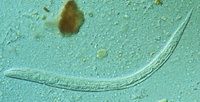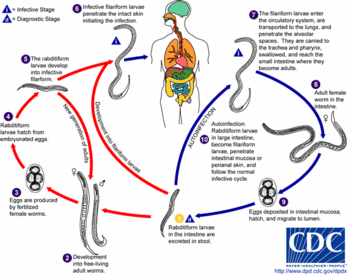Definition
Indigestion, which is sometimes called dyspepsia, is a general term covering a group of nonspecific symptoms in the digestive tract. It is often described as a feeling of fullness, bloating, nausea, heartburn, or gassy discomfort in the chest or abdomen. The symptoms develop during meals or shortly afterward. In most cases, indigestion is a minor problem that often clears up without professional treatment.
Description
Indigestion or dyspepsia is a widespread condition, estimated to occur in 25% of the adult population of the United States. Most people with indigestion do not feel sick enough to see a doctor; nonetheless, it is a common reason for office visits. About 3% of visits to primary care doctors are for indigestion.
Causes & symptoms
Physical causes
The symptoms associated with indigestion have a variety of possible physical causes, ranging from commonplace food items to serious systemic disorders:
- Diet. Milk, milk products, alcoholic beverages, tea, and coffee cause indigestion in some people because they stimulate the stomach's production of acid.
- Medications. Certain prescription drugs as well as over-the- counter medications can irritate the stomach lining. These medications include aspirin, NSAIDs, some antibiotics, digoxin, theophylline, corticosteroids, iron (ferrous sulfate), oral contraceptives, and tricyclic antidepressants.
- Disorders of the pancreas and gallbladder. These include inflammation of the gallbladder or pancreas, cancer of the pancreas, and gallstones.
- Intestinal parasites. Parasitic infections that cause indigestion include amebiasis, fluke and tapeworm infections, giardiasis, and strongyloidiasis.
- Systemic disorders, including diabetes, thyroid disease, collagen vascular disease.
- Cancers of the digestive tract.
- Conditions associated with women's reproductive organs. These conditions include menstrual cramps, pregnancy, and pelvic inflammatory disease.
Psychologic and emotional causes
Indigestion often accompanies an emotional upset, because the part of the nervous system involved in the so-called "fight-or-flight" response also affects the digestive tract. People diagnosed with anxiety or somatoform disorders frequently have problems with indigestion. Many people in the general population, however, will also experience heartburn, "butterflies in the stomach," or stomach cramps when they are in upsetting situations--such as school examinations, arguments with family members, crises in their workplace, and so on. Some people's digestive systems appear to react more intensely to emotional stress due to hypersensitive nerve endings in their intestinal tract.
Specific gastrointestinal disorders
In some cases, the patient's description of the symptoms suggests a specific digestive disorder as the cause of the indigestion. Some doctors classify these cases into three groups:
Esophagitis type
Esophagitis is an inflammation of the tube that carries food from the throat to the stomach (the esophagus). The tissues of the esophagus can become irritated by the flow (reflux) of stomach acid backward into the lower part of the esophagus. If the patient describes the indigestion in terms of frequent or intense heartburn, the doctor will consider gastroesophageal reflux disease (GERD) as a possible cause. GERD is a common disorder in the general population, affecting about 30% of adults.
Peptic ulcer type
Patients who smoke and are over 45 are more likely to have indigestion of the peptic ulcer type. This group also includes people who find that their indigestion is relieved by taking antacids or eating a small amount of food. Patients in this category are often found to have Helicobacter pylori infections. H. pylori is a rod-shaped bacterium that lives in the tissues of the stomach and causes irritation of the mucous lining of the stomach walls. Most people with H. pylori infections do not develop chronic indigestion, but the organism appears to cause peptic ulcer disease (PUD) in a vulnerable segment of the population.
Nonulcer type
Most cases of chronic indigestion--as many as 65%--fall into this third category. Nonulcer dyspepsia is sometimes called functional dyspepsia because it appears to be related to abnormalities in the way that the stomach empties its contents into the intestine. In some people, the stomach empties either too slowly or too rapidly. In others, the stomach's muscular contractions are irregular and uncoordinated. These disorders of stomach movement (motility) may be caused by hypersensitive nerve endings in the stomach tissues. Patients in this group are likely to be younger than 45 and have a history of taking medications for anxiety or depression.
Diagnosis
Patient history
Because indigestion is a nonspecific set of symptoms, patients who feel sick enough to seek medical attention are likely to go to their primary care doctor. The history does not always point to an obvious diagnosis. The doctor can, however, use the process of history-taking to evaluate the patient's mood or emotional state in order to assess the possibility of a psychiatric disturbance. In addition, asking about the location, intensity, timing, and recurrence of the indigestion can help the doctor weigh the different diagnostic possibilities.
An important part of the history-taking is asking about symptoms that may indicate a serious illness. These warning symptoms include:
- Weight loss
- Persistent vomiting
- Difficulty or pain in swallowing
- Vomiting blood or passing blood in the stools
- Anemia.
Imaging studies
If the doctor thinks that the indigestion should be investigated further, he or she will order an endoscopic examination of the stomach. An endoscope is a slender tube-shaped instrument that allows the doctor to look at the lining of the patient's stomach. If the patient has indigestion of the esophagitis type or nonulcer type, the stomach lining will appear normal. If the patient has PUD, the doctor will be able to see breaks or ulcerated areas in the tissue. He or she may also order ultrasound imaging of the abdomen, or a radionuclide scan to evaluate the motility of the stomach.
Laboratory tests
Blood tests
If the patient is over 45, the doctor will have the patient's blood analyzed for a complete blood cell count, measurements of liver enzyme levels, electrolyte and serum calcium levels, and thyroid function.
Tests for Helicobacter pylori
Doctors can now test patients for the presence of H. pylori without having to take a tissue sample from the stomach. One of these noninvasive tests is a blood test and the other is a breath test.
Treatment
Since most cases of indigestion are not caused by serious disorders, many doctors prefer to try medications and other treatment measures before ordering an endoscopy.
Diet and stress management
Many patients benefit from the doctor's reassurance that they do not have a serious or fatal disorder. Cutting out alcoholic beverages and drinks containing caffeine often helps. The patient may also be asked to keep a record of food intake, daily schedule, and symptom severity. Food diaries sometimes reveal psychologic or dietary factors that influence indigestion.
Medications
Patients with the esophagitis type of indigestion are often treated with H2 antagonists. H2 antagonists are drugs that block the secretion of stomach acid. They include ranitidine (Zantac) and famotidine (Pepcid).
Patients with motility disorders may be given prokinetic drugs. Prokinetic medications speed up the emptying of the stomach and increase intestinal motility. They include metoclopramide (Reglan) and cisapride (Propulsid). These drugs relieve symptoms in 60-80% of patients.
Removal of H. pylori
It is not clear that patients with H. pylori infections who have not developed gastric ulcers need to have the bacterium removed. Some studies indicate, however, that these patients may benefit from antibiotic therapy.
Alternative treatment
Herbal medicine
Practitioners of Chinese traditional herbal medicine might recommend medicines derived from peony (Paeonia lactiflora), hibiscus (Hibiscus sabdariffa), or hare's ear (Bupleurum chinense) to treat indigestion. Western herbalists are likely to prescribe fennel (Foeniculum vulgare), lemon balm (Melissa officinalis), or peppermint (Mentha piperita) to relieve stomach cramps and heartburn.
Homeopathy
Homeopaths tailor their remedies to the patient's overall personality profile as well as the specific symptoms. Depending on the patient's reaction to the indigestion and some of its likely causes, the homeopath might choose Gelsemium (Gelsemium sempervirens), Carbo vegetalis, Nux vomica, or Pulsatilla (Pulsatilla nigricans).
Other treatments
Some alternative treatments are aimed at lowering the patient's stress level or changing attitudes and beliefs that contribute to indigestion. These therapies and practices include Reiki, reflexology, hydrotherapy, therapeutic massage, yoga, and meditation.
Prognosis
Most cases of mild indigestion do not need medical treatment. For patients who consult a doctor and are given an endoscopic examination, 5-15% are diagnosed with GERD and 15-25% with PUD. About 1% of patients who are endoscoped have stomach cancer. Most patients with functional dyspepsia do well on either H2 antagonists or prokinetic drugs, depending on the cause of their indigestion.
Prevention
Indigestion can often be prevented by attention to one's diet, general stress level, and ways of managing stress. Specific preventive measures include:
- Stop smoking.
- Cutting down on or eliminating alcohol, tea, or coffee.
- Avoiding foods that are highly spiced or loaded with fat.
- Eating slowly and keeping mealtimes relaxed.
- Practicing yoga or meditation.
- Not taking aspirin or other medications on an empty stomach.
- Keeping one's weight within normal limits.
Key Terms
- Dyspepsia
- Another name for indigestion.
- Endoscope
- A slender tubular instrument used to examine the inside of the stomach.
- Gastroesophageal reflux disease (GERD)
- A disorder of the lower end of the esophagus, caused by stomach acid flowing backward into the esophagus and irritating the tissues.
- H antagonist
- A type of drug that relieves indigestion by reducing the production of stomach acid.
- Heartburn
- A popular term for an uncomfortable burning sensation in the stomach and lower esophagus, sometimes caused by the reflux of small amounts of stomach acid.
- A gram- negative rod-shaped bacterium that lives in the tissues of the stomach and causes inflammation of the stomach lining.
- Motility
- The movement or capacity for movement of an organism or body organ. Indigestion is sometimes caused by abnormal patterns in the motility of the stomach.
- Peptic ulcer disease (PUD)
- A stomach disorder marked by corrosion of the stomach lining due to the acid in the digestive juices.
- Prokinetic
- A drug that works to speed up the emptying of the stomach and the motility of the intestines.
- Reflux
- The backward flow of a body fluid or secretion. Indigestion is sometimes caused by the reflux of stomach acid into the esophagus.
Further Reading
For Your Information
Other
- Indigestion. http://www.thriveonline.com/health/Library/illsymp/illness299.html (6 April 1998).
Gale Encyclopedia of Medicine. Gale Research, 1999.



